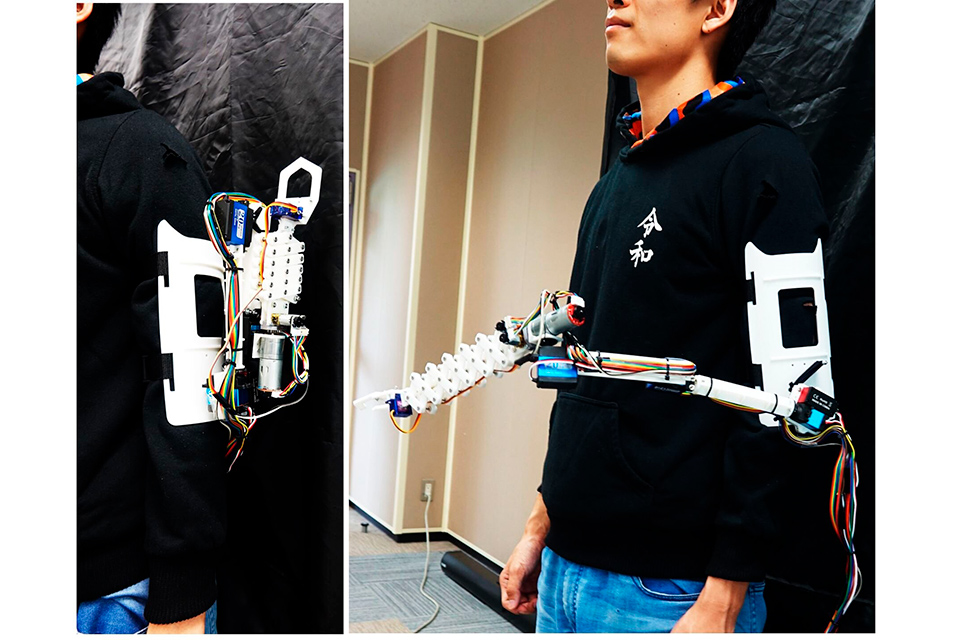TOKYO.- Researchers at Japan Advanced Institute of Science and Technology and
University of Tokyo recently developed AugLimb, a compact robotic limb that could support humans as they complete a variety of tasks. This new limb, presented in a paper pre-published on arXiv, can extend up to 250 mm and grasp different objects in a user's vicinity.
"We are interested in human augmentation technologies, which aim to enhance human capabilities with information and robotics approaches," Haoran Xie, one of the researchers who carried out the study, told Tech Xplore. "We particularly focus on the physical augmentation of human bodies."
Most existing wearable robotic arms are designed to be mounted on a human user's upper body (e.g., on the upper arm, waist or shoulders). While some of these systems have achieved promising results, they are typically based on bulky hardware and wearing them can be uncomfortable for users.
"Most previously developed supernumerary robotic limb devices are heavy and occupy large space," Xie said. "Instead, we proposed a compact robotic limb that can fold into small volume without the interrupt to the wears' daily activities, especially for long-time usage."
In contrast with other robotic arms, AugLimb can extend significantly, becoming approximately 2.5 times longer than a human's average forearm length. Moreover, it is highly compact and thus easy to store.
"AugLimb has 7 DOFs (degree of freedoms) and can be easily fabricated using normal 3D printers and motors," Xie said. "Compared to existing robotic limbs, AugLimb has human-centric design that largely improves the wearer's experience, so that anyone can enjoy it while reaping the benefits of the enhanced body capabilities derived from having a 'third arm'."
In addition to being compact, the robotic limb developed by Xie and his colleagues is lightweight and comfortable to wear. This also makes it suitable for users with more fragile bodies, including children and older adults.
"The most notable achievement of our study is that we were able to develop a robotic arm that is compact and can reach across long distances while in use," Xie said. "We believe that AugLimb will be as popular as smart watches in the near future, as anyone from an elder to a child can comfortably wear it for the whole day."
AugLimb essentially serves as a third arm, thus it could be particularly useful in situations where humans complete tasks that involve a significant amount of object manipulation, such as cooking or cleaning. The researchers also believe that it could be used by doctors performing surgical operations, construction workers and other professionals who complete manual tasks on a daily basis.
The robotic arm developed by Xie and his colleagues is still at a prototype stage. However, the team plans to continue testing it and improving its capabilities, to make it increasingly effective and commercially viable. For instance, the AugLimb prototype is currently controlled by human operators manually, but the team would like to improve its control mechanism by exploring alternative solutions.
"In our future studies, we would like to explore effective ways to control AugLimb with biological information, such as electromyography (EMG) signals from muscles or electroencephalogram (EEG) techniques that detect brain waves," Xie said. "We also plan to use deep learning to improve the analysis of these signals."










